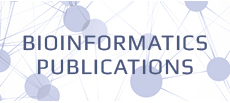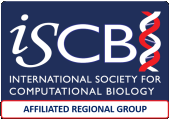21th International School for Computer Science Researchers
Medical and Molecular Imaging, and BioInformatics
Lipari, Italy: July 11-18 2009
WEBSITE: http://lipari.dipmat.unict.it/LipariSchool/CS
The Twenty-first International School for Computer Science Researchers addresses PhD
students and young researchers who want to get exposed to the forefront of research
activity in the field of Molecular and Medical Imaging. The school will be held in the
beautiful surroundings of the Island of Lipari.
____________
List of speakers
Nicholas Ayache
Research Director at INRIA Sophia-Antipolis, France
Mike Brady
Professor of Information Engineering, University of Oxford
Jim Duncan
Professor of Biomedical Engineering, Yale University, CT
Roger Gunn
Director, Molecular Image Analysis at GSK, UK
Richard M. Leahy
Signal and Image Processing Institute,University of Southern California
Gene Myers
Howard Hughes Medical Institute, Ashburn, VA
Daniel Rueckert
Professor of Visual Information Processing, Imperial College, London
Julia Schnabel
Medical Vision Laboratory, University of Oxford
_________
Directors
Prof. Mike Brady, (University of Oxford), Co-Chair
Prof. Roberto Cipolla, (University of Cambridge), Co-Chair
Prof. Alfredo Ferro, (University of Catania), Co-Chair
Prof. Giovanni Gallo, (University of Catania), Co-Chair
_________
Topics covered by the School: http://lipari.dipmat.unict.it/LipariSchool/CS/
Nicholas Ayache Lectures
1. Cortex Variability from sulcal lines extracted from a database of MR images
2. Tumor growth from time series of MR images and physiopathological models
3. Cardiac function from images and physiological models
4. Mosaicing of/ in vivo/ microscopic images
Mike Brady Lectures
1. Feature detection and density estimation in medical image analysis
2. Image analysis in colorectal and liver cancer
3. Some aspects of molecular imaging: glycolysis, hypoxia, and optical image analysis
Jim Duncan Lectures
1. Recovery of Soft Tissue Deformation from Medical Images (mainly work on the Left
ventricle of the heart and brain shift in epilepsy surgery)
2. Geometric Strategies for Neuroanatomic Analysis from MRI (mostly different approaches
for cortical + subcortical segmentation)
3. fMRI Analysis Using Prior Information
4. Registration and plan updating for Image Guided Intervention (primarily for Epilepsy,
Neurosurgery and/or Prostate Radiotherapy).
Roger Gunn Lectures
1. Physics, Biology and Modelling Precursors for PET Molecular Imaging
- Physics
- Biology
- Modelling
-Spatial Processing
-Input Functions
2. Quantitative Analysis of Dynamic PET Molecular Imaging Studies
- Tracer Compartmental Modelling
- Reference Tissue Approaches
- Basis Function Approaches
3. Development and Validation of CNS PET Molecular Imaging Probes
- What kind of properties does one need
- Experiments to do to validate probes
- Examples
- Biomathematical modelling approaches
4. Application of PET Molecular Imaging to CNS Drug Development
- The drug discovery and development process
- Biodistribution Studies
- Occupancy Studies
Richard Leahy Lectures
1. Image Estimation for Molecular Imaging 1: Statistical and physical models and Bayesian
estimation
2. Image Estimation for Molecular Imaging 2: Image analysis and detection
3. Mapping brain function with magnetoencephalography (MEG) 1: forward models and inverse
methods
4. Mapping brain function with magnetoencephalography (MEG) 2: detecting and modeling
cortical interactions and networks
Gene Myers Lectures
Arguably the most significant contribution of the human genome project is that we can now
build a recombinant construct of every gene and every promotor in C. elegans (worm), D.
melanogaster (fly), M. musculus (mouse), and H. sapiens (human). These include
fluorescent proteins and other markers that can be induced at controlled time points via
a change in temperature, light, or chemistry. Combined with tremendous advances in light
and electron microscopy in recent years, I believe we are now poised to visualize the
meso-scale of the cell, and the development small organs (e.g. a fly’s brain) and
organisms (e.g. the worm) at the resolution of individual cells.
These advances will require new imaging and data-mining methods for what I call “imaging
bioinformatics”. Many of the problems resemble those that arising in medical imaging but
at a different scale and resolution. Toward this end, my group is working on a number of
imaging projects along these lines. These include (a) the biophysica of mitosis, (b)
studies of gene expression in individual cells within the worm C.
elegans, (c) a detailed reconstruction of a fly’s brain including it developmental
partitioning into linages, and (d) a high-throughput microscope to image the volume of an
entire mouse brain at 1 micro resolution (4.2 trillion voxels) in less than a week. I
will spend my lectures introducing the relevant biological background and the nature of
the computational problems, as well as going into some detail on the major methods we
employ to solve these problems.
Daniel Rueckert and Julia Schnabel Lectures
1. Non-rigid registration I: Theory and Methods
2. Non-rigid registration II: Advanced Methods and Validation
3. Cardiac and respiratory motion modeling using registration
4. Neurological image analysis using registration
Reading Group
Prof. Mike Brady will lead the session marked “Reading”, which will be based on the
weekly reading seminar he has lead in Oxford for the past 20 years. The students will be
assigned a paper in advance of arriving in Lipari and will be expected to have read it
thoroughly. They should be prepared to explain the content, either in broad outline, or
on detailed points, to all the rest of the students.
_________
Registration: http://lipari.dipmat.unict.it/LipariSchool/CS/?q=user/register
Two kinds of participants are welcome. Students: Participants who are expected to do
afternoon
courseworks and take a final exam. Auditors: Participants who are not interested in
taking the
final exam. Registration fee is 350 Euros all inclusive of: course material (memory
stick), bus +
hydrofoil Catania airport-Lipari-Catania airport, 2 social tours (Salina and Panarea) and
the social
dinner on the beach of Vulcano. Deadline for application is March 31, 2009. Late
registration is
450 Euros. Applicants must include a short curriculum vitae and specify two professors
whom
letters of recommendation will be asked to, if deemed necessary. Applicants will be
notified
about admission by April 15, 2009.
_________
Local arrangements: http://lipari.dipmat.unict.it/LipariSchool/CS/?q=node/3
Participants will be arranged in a comfortable hotel at very special rates. The
conference room is
air-conditioned and equipped with all conference materials. Special areas are reserved to
students for the afternoon coursework and study. The island of Lipari can be easily
reached from
Milazzo, Palermo, Naples, Messina and Reggio Calabria by ferry or hydrofoil (50 minutes
from
Milazzo).
Società Italiana di Bioinformatica
Sede legale Viale G. Mazzini, 114/B – 00195 Roma
C.F. / P.IVA 97319460586
C.F. / P.IVA 97319460586
© 2003-16 • designed by esthos • powered by sciencedev




